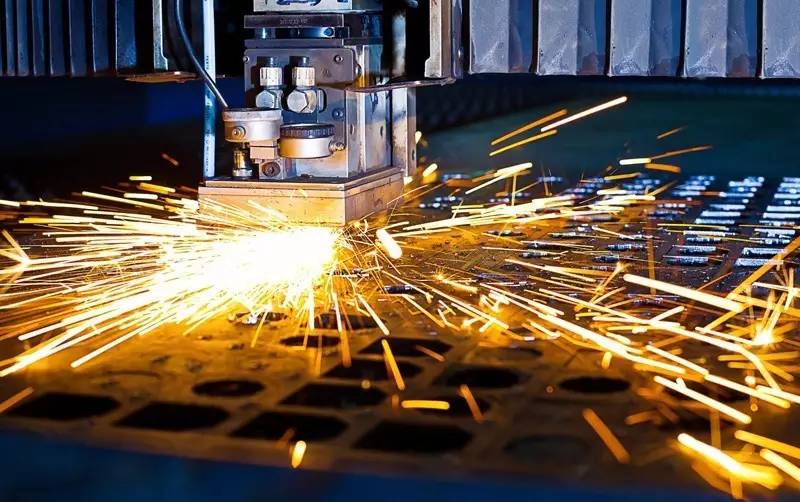In September 2025, China’s Manufacturing Purchasing Managers’ Index (PMI) recorded 49.8%, remaining below the 50% expansion-contraction threshold for the sixth consecutive month and marking the longest contraction cycle since 2019. The sustained weakness in manufacturing seems to stand in stark contrast to the positive growth of overall GDP and exports.
Although September’s manufacturing PMI edged up from the previous month, it still stayed in the contraction range, reflecting pressures from weak demand, rising costs, and external uncertainties. Specifically, the New Orders Index stood at 49.9%—close to the threshold but still indicating insufficient domestic demand. The Production Index reached 51.2%, entering the expansion range yet with a slower growth rate. The Raw Material Inventory Index was 47.6%, signifying that enterprises continued the process of destocking. Additionally, the PMI for high-energy-consuming industries was 47.5%, heavily impacted by environmental policies and fluctuations in energy prices. In contrast, the PMI for equipment manufacturing and high-tech manufacturing recorded 50.6% and 52.9% respectively, demonstrating that emerging industries still maintain relative resilience.
The prolonged contraction cycle in manufacturing stems from multiple factors. Internally, China’s economy is shifting from high-speed growth to high-quality development, leaving traditional manufacturing facing the dual challenges of overcapacity and weak demand. The ongoing adjustment of the real estate market and the slow recovery of consumer confidence have further restrained manufacturing investment and orders. Externally, the escalation of China-US trade frictions and the higher tariff barriers imposed by the US and Europe on China have led to a 33% decline in exports to the US. Geopolitical risks and the restructuring of global supply chains have also further increased enterprises’ operating costs.
Despite the difficulties in manufacturing, China’s overall GDP and exports have maintained growth, reflecting the diversification and resilience of its economy. In the first half of 2025, China’s GDP grew by approximately 5.3% year-on-year, with a growth rate of 5.2% in the second quarter. The preliminary forecast for the third quarter is a growth rate of around 4.5%, and the full-year growth is expected to be about 4.8%—still higher than the potential growth rate. This is attributed to the "multi-legged" economic structure. The service sector has become the main driver of growth: September’s Non-Manufacturing PMI was 50.0%, slightly down from August’s 50.3% but still above the threshold. Accounting for over 50% of GDP, the service sector covers retail, finance, technology services, and other fields, and its continuous expansion has effectively offset the drag from manufacturing. For instance, the digital economy and recovering consumption have driven growth in industries such as e-commerce and tourism.
Infrastructure and investment are another key driver. Through fiscal stimulus—such as issuing special bonds and increasing infrastructure investment—the government has supported the construction industry and real estate-related fields. The manufacturing contraction may stem from short-term inventory adjustments, but with policy support and demand diversion, the overall economy has still achieved positive growth.
Exports are an even more prominent highlight. In the first eight months of 2025, China’s total exports grew by approximately 6% year-on-year; although the growth rate slowed to a six-month low in August, it remained positive overall. The recovery of the export order index in September has further promoted improvements in manufacturing production. This resilience mainly comes from the countercyclical growth of emerging industries. Exports of the "three new products"—electric vehicles, lithium batteries, and solar cells—have seen explosive growth. Additionally, the moderate depreciation of the RMB has enhanced price competitiveness, and enterprises have avoided some trade barriers through supply chain optimization (such as localized production).
From a broader perspective, China’s economy is transitioning from traditional manufacturing to high-tech and service industries, and the contraction of manufacturing PMI can be viewed as "growing pains" in the process of structural optimization. Recent stimulus measures introduced by the government, such as reserve requirement ratio cuts, interest rate cuts, and special bond issuances, are expected to further boost domestic demand and investment.
Based on the above economic context, the following layouts are recommended for investing in China’s stock market:
-
The continuous contraction of manufacturing may drag down the profits of related enterprises and trigger short-term corrections. For example, stocks in traditional manufacturing sectors such as steel and chemicals are vulnerable to impact, so overweight positions in these areas are not recommended. However, recent stimulus policies like reserve requirement ratio cuts and special bond issuances have begun to show results: sub-indicators of September’s PMI, such as the Production Index and New Orders Index, have edged up slightly, indicating a potential rebound. In the short term, prudent layout is advised, with focus on stocks related to infrastructure and consumption recovery—such as construction materials and retail enterprises. These sectors benefit from domestic demand-driven growth and have significant rebound potential.
-
Export growth is a current highlight. Companies in the industrial chain of the "three new products"—such as new energy vehicle manufacturers and photovoltaic enterprises—have reasonable valuations. Supported by global green demand, they possess long-term growth potential. As GDP growth relies on the service sector and technological transformation, the expansion of Non-Manufacturing PMI indicates that technology stocks (e.g., AI, digital economy) and consumer service stocks (e.g., e-commerce, tourism) are less sensitive to the drag from manufacturing and demonstrate more stable growth.
In the event of any inconsistency between the English and Chinese versions, the Chinese version will prevail.This article is from Plotio. Please indicate the source when reprinting.



